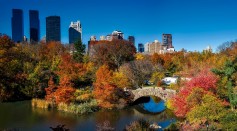urban

Identical Twins Sharing Nearly the Same Genes More Inclined Towards Natural Spaces

Urban Trees Reduce Pollution and Heatwaves
Experts Identified Benefits of Pop-Up Parks in Urban Areas
Citizens Could Benefit From Adjusting Streetlights For Bats
How Pollutions Are Causing Urban Sea Snakes To Lose Their Stripes
The Foodies Beneath Our Feet—Urban Ants Like Human Food Too
Climate Change And the Urban Heat Island in California's Central Valley
Crytptic New Species of Leopard Frog Found in New York City
Most Popular

How Technology Is Changing the Real Estate Industry?

Study Reveals High Turnover in Scientific Research Careers: What This Means for Future Scientists

How a Plant-Based Diet Can Protect Against Breast Cancer: Insights from Nutrition Research

Why It's So Difficult to Lose Weight: The Biological Explanation Behind Obesity





